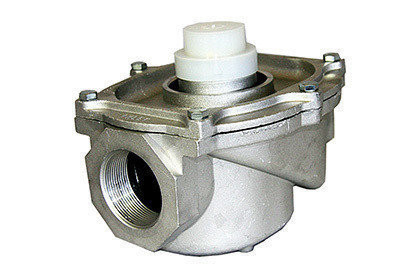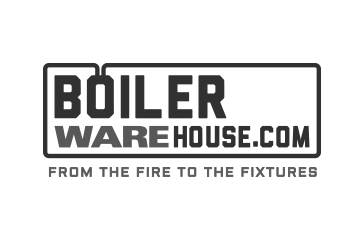Gas Valves and Actuators
Gas valves are important safety devices that ensure proper gas shut off to your burners. When the burner control calls for cease of operation and shuts the burner down, the gas valves should close and make sure no more fuel enters into the combustion chamber. They can be motorized, hydraulic, or even solenoid type valves. We offer brands in ITT/ASCO, Siemens, and Maxon.
If you do not see the part you want below, feel free to use the chat function and see if we possibly have the part you are looking for in stock.

Gas Valves and Actuators Categories
Manufacturers View all
What are Gas Valves and Actuators & What is their function?
Gas valves and actuators keep fuel flowing safely
Gas valves and actuators work together to regulate the flow of natural gas or propane entering the burners of a boiler’s furnace. They make sure the boiler has fuel when it needs it, and that the supply shuts off completely when fuel isn’t needed.
Gas valves and actuators turn the fuel on, off, and in between
The fuel flowing into a boiler has to be carefully controlled to make sure combustion stays consistent, even, and safe. Gas valves and actuators control the flow of fuel together.
Gas Valves are used to turn the flow on and off.
Valve Bodies modulate the flow during the firing cycle as the boiler calls for more or less fuel.
Actuators are motors or servos that physically turn the valves or adjust the valve bodies based on input from the boiler control system.
Different Types of Gas Valves and Actuators & How To Choose
Actuators can be:
Electronic
Hydraulic
Solenoid-operated
The Role Gas Valves and Actuators Play in a Boiler
Gas valves and valve bodies make sure that the proper amount of fuel flows when it needs to, and that the fuel supply is cut off completely when the boiler isn’t firing. Gas valves can be manually operated, for example at the utility supply line, or they can be integrated into a boiler’s control system.
If a boiler is automatically controlled, the actuators act as the “hands” of the boiler control system, turning the gas valves on and off and adjusting the valve bodies for safe, efficient operation.
what are the Effects of Bad Gas Valves and Actuators?
If a gas valve or valve body starts to fail, the supply of fuel will be incorrect for proper firing.
The boiler will either be starved of fuel, or it will run too rich. The flow of fuel might even continue after shutdown, which can be extremely dangerous.
A failing actuator will not move the valve or valve body when and where it’s supposed to. This can create poor performance, low steam production, or a dangerous fuel leak.
Things to Consider about gas valves and actuators:
- Gas valves and actuators can be physically attached to each other directly (parallel positioning), or they can be joined by a linkage.
- If they use a linkage, it’s important to check it for slack regularly to make sure the valve is actually where the actuator says it should be.
Helpful Resources
Relevant WARE Videos on Gas Valves and Actuators
Gas Pressure Regulation for Boiler Combustion
Gas Pressure Regulation Station
How To Check the Pilot Gas Pressure - Pilot Problems Part 4
Reading Gas Pressure Gauges on Gas Train
Checking Gas Train for Leaks on a Steam Boiler
NFPA 85 Code: Gas Train and Venting
Getting the Right Gas Pressure to the Burner for Combustion
Explaining Natural Gas Curtailment
Inspecting a Honeywell Gas Valve Actuator For Leaking Fluid
Using a Vent Orifice on a Siemens Gas Regulating Actuator
Re-Lubrication Maintenance of a Plug Gas Valve
Propane to Light the Pilot for a Rental Boiler
Parts of the Boiler Room | Boiler Combustion and Steam System
IR vs UV Boiler Flame Scanners and How They Work
Boiler Combustion Tuning and Analysis (Part 1)
Linkage vs Parallel Positioning
Flame Safeguard Operations Part 2
Explore over 750+ explanatory videos on boilers and boiler systems on our Youtube channel. Our videos can help you quickly grasp complex boiler topics. Watch more here!
Relevant WARE Blog Articles on Gas Valves and Actuators
What’s the Deal With Gas Actuators and Valves?
What the Heck is Liquid Natural Gas?
NFPA 85 Code: Gas Train and Venting - The Boiling Point
Our informative and educational blog content can help you gain a deeper understanding of the boiler room. Read more here!
Technical Documents
Gas Valves and Actuators FAQ
Why do some boilers have two main gas valves?
Larger boilers use more fuel, which means a leaky valve becomes a big problem really quickly. Therefore, they’re required to have two valves mounted inline together so that if one fails, the other can shut the supply off safely.
What’s a “proof of closure” switch?
Because gas is so volatile, gas supply valves have integrated switches in them that activate only when the valve is fully and completely closed. That way, the control system has positive confirmation that the valves are sealed properly.
What does the flame safeguard have to do with a gas valve?
The flame safeguard is the failsafe that prevents dangerous gas buildup. The flame safeguard prevents the gas valves from opening unless there is already an existing flame to ignite the gas in the burners. Without the flame safeguard, gas could be allowed to build up and potentially cause an explosion.







